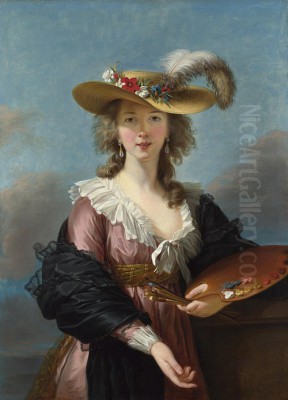
Élisabeth Louise Vigée Le Brun stands as one of the most significant and successful painters of the late 18th and early 19th centuries. A French artist renowned primarily for her elegant and insightful portraits, she navigated the turbulent political landscape of her time with remarkable resilience and artistic prowess. Patronized by European royalty, most famously Queen Marie Antoinette of France, Vigée Le Brun crafted a career that defied the significant limitations placed upon women artists, leaving behind a prolific body of work that continues to captivate audiences with its grace, sensitivity, and technical brilliance. Her life and art offer a fascinating window into the worlds of Rococo charm, Neoclassical ideals, and the dramatic upheaval of the French Revolution.
Early Life and Artistic Formation
Born in Paris on April 16, 1755, Élisabeth Louise Vigée entered a world steeped in art. Her father, Louis Vigée, was a respected portraitist working primarily in pastels and a member of the Académie de Saint-Luc. Recognizing his daughter's prodigious talent at a young age, he became her first teacher, nurturing her innate abilities. Élisabeth showed remarkable aptitude, reportedly drawing figures on her schoolbooks and demonstrating a natural flair for capturing likenesses.
Tragically, her father died when she was just twelve years old. This loss deeply affected the young artist but did not derail her burgeoning passion. Her mother, a hairdresser, remarried a wealthy jeweler, Jacques-François Le Sèvre, a union Élisabeth reportedly disliked. However, her artistic education continued informally. She received advice and encouragement from established artists her father had known, including Gabriel-François Doyen, Jean-Baptiste Greuze, and Joseph Vernet, who recognized her potential and urged her to persist.
Crucially, Vigée Le Brun was largely self-taught through diligent practice and the study of Old Masters. She frequented Parisian galleries and private collections, meticulously copying works by Flemish and Dutch masters like Peter Paul Rubens, Anthony van Dyck, and Rembrandt van Rijn. She also admired the work of Italian Renaissance painters and contemporary French artists. This rigorous self-education honed her technical skills and developed her understanding of color, composition, and light.
Launching a Professional Career
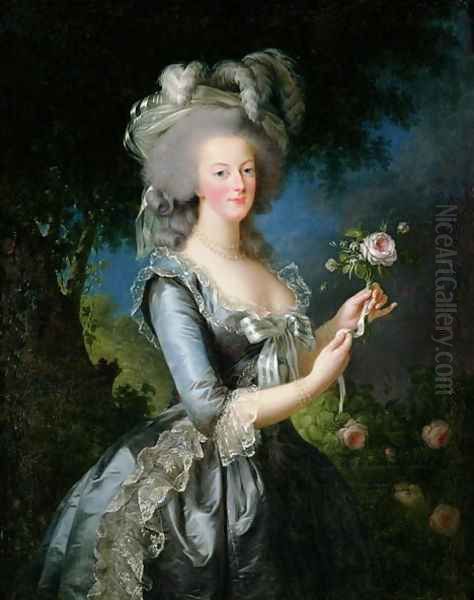
By her mid-teens, Élisabeth Vigée was already painting portraits professionally, quickly gaining a reputation for her flattering and lifelike depictions. Her talent and charm attracted a growing clientele from the Parisian aristocracy. However, her burgeoning career faced an early obstacle. Since she was operating without official membership in a guild or academy, her studio was seized in 1774 for practicing illegally.
This setback proved temporary. Demonstrating characteristic resourcefulness, Vigée Le Brun applied to the Académie de Saint-Luc, the guild to which her father had belonged. She was readily admitted on October 25, 1774, which legitimized her practice and allowed her to exhibit her work publicly. This membership marked a significant step in establishing her professional identity in a field overwhelmingly dominated by men.
Her early style showed the influence of the prevailing Rococo aesthetic, characterized by soft colors, delicate brushwork, and an emphasis on charm and grace. She excelled at capturing the luxurious fabrics and elaborate hairstyles of the era, yet even in these early works, a sensitivity to the sitter's personality began to emerge, hinting at the deeper psychological insight that would mark her mature style.
Marriage and Rise to Prominence
In 1776, Élisabeth married Jean-Baptiste-Pierre Le Brun. He was a painter himself but more significantly, a prominent art dealer and connoisseur. This marriage was pivotal for her career. Le Brun's connections and expertise provided her with access to important patrons and collections. His knowledge of Old Masters likely further influenced her artistic development, and his profession placed them at the center of the Parisian art world.
While the marriage provided professional advantages, it was not without its difficulties. Jean-Baptiste-Pierre Le Brun was known to be a gambler and womanizer, and he reportedly appropriated large sums of his wife's earnings. Despite these personal challenges, the union undeniably facilitated Vigée Le Brun's ascent. Her husband's gallery became a venue for displaying her work, and his connections helped secure prestigious commissions.
Throughout the late 1770s and early 1780s, Vigée Le Brun's reputation soared. She became one of the most sought-after portraitists in Paris, painting numerous members of the French nobility and the burgeoning financial elite. Her studio became a fashionable meeting place, attracting not only clients but also artists, writers, and intellectuals.
The Royal Painter: Marie Antoinette's Confidante
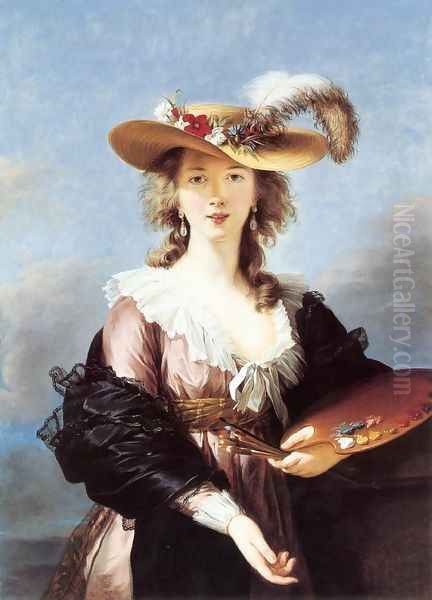
Vigée Le Brun's career reached its zenith when she gained the patronage of Queen Marie Antoinette. In 1778, she was summoned to Versailles to paint the Queen for the first time. This initial commission marked the beginning of a close and enduring relationship. The Queen was reportedly delighted with Vigée Le Brun's ability to capture not only her likeness but also an air of regal grace combined with approachability.
Over the next decade, Vigée Le Brun painted more than thirty portraits of Marie Antoinette and her children. These works range from formal state portraits, designed to project majesty and dynastic continuity, to more intimate depictions that emphasize the Queen's role as a mother and her preference for simpler, pastoral aesthetics. The artist skillfully navigated the Queen's desire to appear both as a monarch and as a woman of sensibility.
This close association with the Queen brought Vigée Le Brun immense prestige and solidified her position at the apex of French society. It also, however, inextricably linked her fate to that of the monarchy, a connection that would prove perilous as revolutionary sentiments intensified. Her portraits of the Queen became powerful symbols, both celebrated by royalists and vilified by the monarchy's detractors.
Navigating Controversy: Portraits and Politics
Vigée Le Brun's success was not without its share of controversy, often fueled by her gender, her perceived ambition, and her close ties to the Queen. One of the most notable scandals erupted over her 1783 portrait Marie Antoinette en Gaulle (or en chemise). In this work, she depicted the Queen in a simple, white muslin dress and straw hat, reflecting a contemporary fashion for rustic simplicity promoted by the Queen herself.
When exhibited at the Salon of 1783, the portrait caused an uproar. Critics deemed the informal attire inappropriate and undignified for the Queen of France, likening the dress to underwear. The painting was quickly removed and replaced by a replica showing the Queen in a more conventional and acceptable blue-grey silk dress (Marie Antoinette with a Rose). This incident highlighted the political weight attached to royal imagery and the public scrutiny faced by both the Queen and her favored painter.
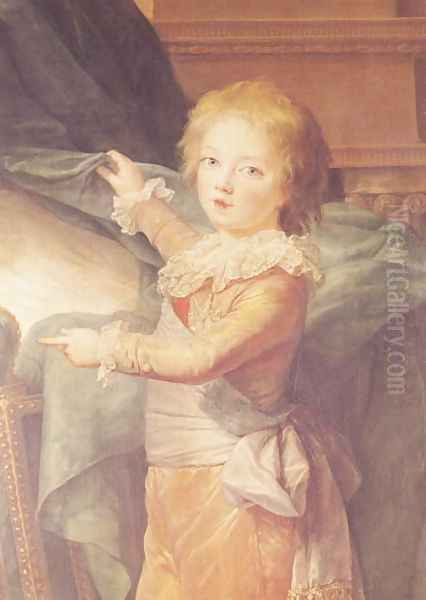
Vigée Le Brun also faced personal attacks and slanderous rumors, common tactics used against successful women in the public eye. Pamphlets and gossip accused her of having affairs with prominent figures, most notably the finance minister, Charles Alexandre de Calonne. These accusations, likely baseless, aimed to undermine her reputation and associate her success with impropriety rather than talent. She was sometimes derided as a mere "courtesan" who used feminine wiles to advance her career, ignoring her evident artistic skill and hard work.
Even her artistic innovations could spark debate. Her self-portraits, particularly one from 1787 where she depicted herself smiling with parted lips, revealing her teeth, were considered by some to be a breach of decorum, though others saw it as refreshingly natural and expressive. This seemingly minor detail underscores the strict conventions governing portraiture at the time and Vigée Le Brun's willingness to gently push boundaries.
Admission to the Académie Royale
Despite the challenges and controversies, Vigée Le Brun achieved a significant milestone in 1783 when she was admitted to the prestigious Académie Royale de Peinture et de Sculpture. This was a remarkable accomplishment for a woman, as the Academy severely restricted female membership (limiting it to only four members at any given time).
Her admission was not straightforward. Reportedly, some members resisted her entry, possibly due to professional jealousy or sexism, or perhaps influenced by her husband's sometimes controversial dealings in the art market. However, powerful support from Marie Antoinette and other influential figures ultimately secured her place. On the same day, another talented female artist, Adélaïde Labille-Guiard, was also admitted, leading to inevitable comparisons and a perceived rivalry between the two women throughout their careers.
Membership in the Académie Royale was the highest official recognition an artist could achieve in France. It granted Vigée Le Brun the right to exhibit regularly at the official Salons without needing special permission, further enhancing her visibility and status. Her reception piece for the Academy was Peace Bringing Back Abundance (1783), an allegorical history painting, demonstrating her ambition to excel not just in portraiture but also in the most highly regarded genre of academic art.
Artistic Style: Rococo Grace Meets Neoclassical Sensibility
Vigée Le Brun's mature style represents a masterful synthesis of late Rococo elegance and emerging Neoclassical ideals. While she retained the Rococo emphasis on charm, grace, and flattering portrayals, she increasingly incorporated elements of Neoclassicism, such as clearer compositions, smoother finishes, and references to classical antiquity in dress and pose.
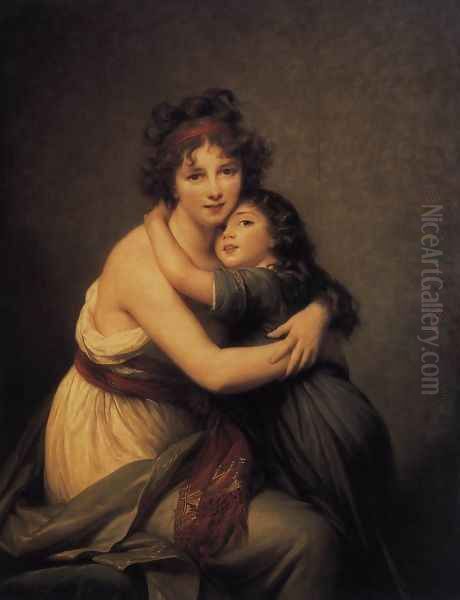
Her color palette was typically rich yet harmonious, employing soft, luminous tones and subtle gradations to model form. She had an exceptional ability to render textures, from the sheen of silk and satin to the softness of velvet and fur, and the translucence of skin. Her brushwork, while often highly finished in the Neoclassical manner, could also be fluid and expressive, particularly in capturing hair or background details.
Influenced by her study of masters like Rubens and Van Dyck, she often employed dynamic poses and compositions that imbued her sitters with vitality. She particularly admired Rubens's use of color and light. Her travels, especially later in Italy, further exposed her to the clarity and idealized forms of Renaissance and classical art, reinforcing the Neoclassical tendencies in her work. She also drew inspiration from French predecessors like Jean-Marc Nattier, known for his mythological portraits of court ladies.
Above all, Vigée Le Brun possessed a remarkable talent for capturing not just a physical likeness but also the personality and social standing of her sitters. Her portraits often convey a sense of intimacy and immediacy, making her subjects appear approachable and alive. She frequently depicted women and children with particular sensitivity, emphasizing maternal affection and youthful innocence, as seen in her celebrated self-portraits with her daughter, Julie.
Masterworks and Signature Portraits
Over her long career, Vigée Le Brun produced an astonishing number of works, estimated at around 660 portraits and 200 landscapes. Several stand out as defining examples of her artistry:
Marie Antoinette and Her Children (1787): Commissioned in response to criticism of the Queen's perceived frivolity and childlessness (following the death of her youngest daughter), this large state portrait aimed to rehabilitate the Queen's image by presenting her as a devoted mother. The empty cradle poignantly references her lost child. It is a masterful blend of regal formality and maternal tenderness, executed with exceptional skill.
Self-Portrait in a Straw Hat (after 1782): Inspired by Rubens's portrait La Chapeau de Paille (The Straw Hat), which she saw in Antwerp, this self-portrait showcases her admiration for the Flemish master. It presents her as a confident and fashionable artist, bathed in soft, natural light, embodying the elegance and sensibility she championed.
Self-Portrait with Her Daughter, Julie (1786 & 1789): Vigée Le Brun painted several tender portraits of herself with her only child, Jeanne-Lucie-Louise, known as Julie. These works, particularly the one exhibited in 1789, emphasize maternal love and intimacy, drawing parallels with Renaissance depictions of the Madonna and Child. They are among her most personal and beloved images.
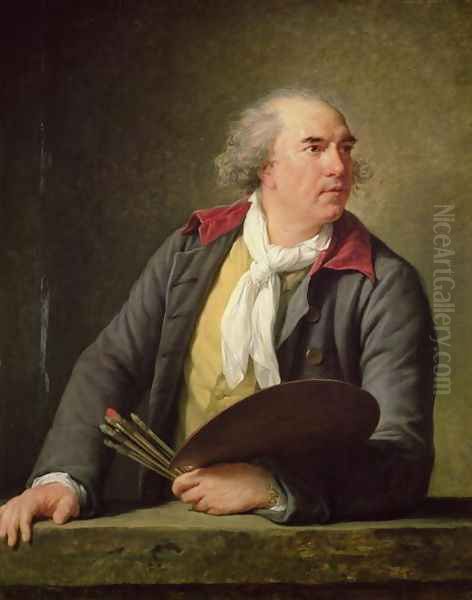
Portrait of Hubert Robert (1788): Her portrait of the fellow artist Hubert Robert, known for his romantic landscapes and paintings of ruins, captures him with palette and brushes in hand, looking directly at the viewer with a friendly, intelligent gaze. It exemplifies her ability to portray male sitters with insight and character.
Madame de Staël as Corinne (c. 1808-1809): Painted during her exile, this portrait depicts the influential writer Germaine de Staël in the guise of Corinne, the improvisational poetess heroine of her novel Corinne, or Italy. Set against an Italian landscape, it captures the Romantic spirit and intellectual fervor of its subject.
These examples represent just a fraction of her output, which included portraits of virtually every notable figure of her time, from French aristocrats to European royalty and prominent cultural figures.
Revolution and Years in Exile
The outbreak of the French Revolution in 1789 dramatically altered Vigée Le Brun's life and career. Her close association with Queen Marie Antoinette and the royalist circle placed her in grave danger. Fearing for her safety, she fled Paris on the night the royal family was forced to leave Versailles for the Tuileries Palace, traveling with her young daughter, Julie.
This marked the beginning of twelve years in exile. Vigée Le Brun traveled extensively throughout Europe, transforming her flight into a triumphant artistic tour. Her fame preceded her, and she was welcomed by the courts and aristocracies of Italy, Austria, Russia, Germany, England, and Switzerland.
In Italy, she visited Florence, Rome, and Naples, immersing herself in the art of the Italian masters and painting local nobility. In Rome, she encountered other expatriate artists, including the celebrated Swiss Neoclassical painter Angelica Kauffman. In Vienna, she painted members of the Habsburg imperial family.
Her longest and perhaps most successful period in exile was spent in St. Petersburg, Russia, from 1795 to 1801. She was warmly received by Empress Catherine the Great (though the Empress died shortly after her arrival) and became highly sought after by the Russian aristocracy, painting numerous members of the imperial family and leading noble houses. Her elegant style resonated with the tastes of the Russian court, and she earned a substantial fortune during her stay.
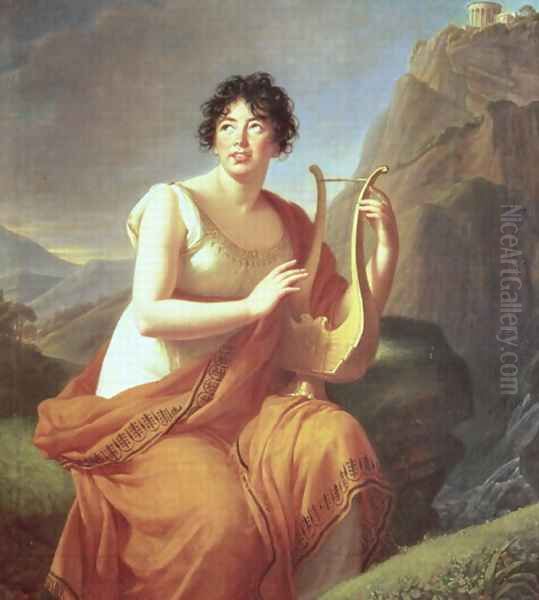
Throughout her exile, Vigée Le Brun continued to paint prolifically, adapting her style subtly to suit the tastes of her diverse international clientele while maintaining her signature elegance. She was elected to membership in several foreign art academies, including those in Florence, Rome, Bologna, Saint Petersburg, and Berlin, further cementing her international reputation.
Return to France and Later Years
After years of petitioning by her ex-husband and other supporters, Vigée Le Brun's name was finally removed from the list of proscribed émigrés. She was able to return to France definitively in 1802, during the relative stability of Napoleon Bonaparte's Consulate. While she found Paris greatly changed and initially struggled to regain her former standing amidst the dominance of Jacques-Louis David's sterner Neoclassical style, she continued to paint.
She traveled again to London (1803-1805), where she painted members of the British aristocracy, including Lord Byron, and later journeyed to Switzerland (1807-1808), where she painted Madame de Staël and explored landscape painting more seriously.
In her later years, Vigée Le Brun largely retired from commissioned portraiture but continued to paint for pleasure and remained a respected figure in the art world. Between 1835 and 1837, she published her memoirs, Souvenirs, which provide invaluable insights into her life, her artistic practice, the personalities she encountered, and the tumultuous historical events she witnessed. These memoirs also offer a compelling account of the challenges and triumphs of a woman artist navigating a male-dominated profession.
Élisabeth Louise Vigée Le Brun died in Paris on March 30, 1842, at the advanced age of 86. She was buried in the cemetery of Louveciennes, a village outside Paris where she had owned a country home. Her tombstone bears the epitaph "Ici, enfin, je repose…" (Here, at last, I rest…).
Legacy and Influence
Élisabeth Vigée Le Brun left an indelible mark on the history of art. Her sheer productivity was remarkable, solidifying her status as one of the most prolific portraitists of her era. Her ability to blend Rococo charm with Neoclassical structure created a distinctive and highly appealing style that captured the essence of late ancien régime elegance while adapting to the changing tastes of the revolutionary and Napoleonic periods.
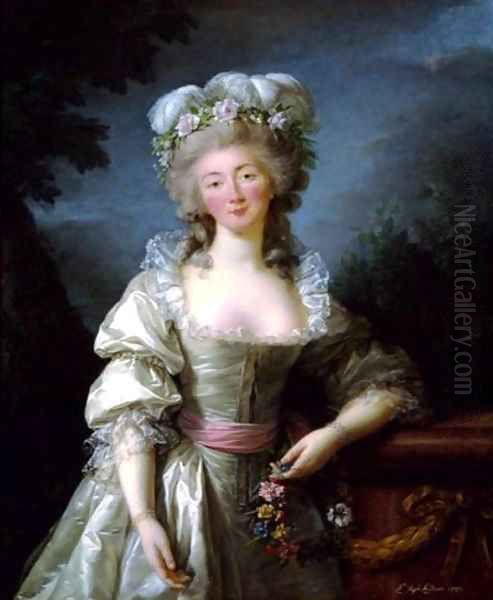
Her greatest legacy, perhaps, lies in her pioneering role as a successful female artist in a profoundly patriarchal society. She achieved international fame and financial independence through her talent and determination, challenging contemporary notions about women's capabilities in the arts. Her admission to the Académie Royale and numerous foreign academies broke significant barriers.
Her portraits, particularly those of Marie Antoinette, serve as crucial historical documents, offering visual records of key figures during a pivotal period in European history. Her memoirs provide a unique female perspective on the art world and the dramatic political events she lived through.
Today, Vigée Le Brun's works are held in major museums worldwide, including the Louvre Museum in Paris, the Metropolitan Museum of Art in New York, the National Gallery in London, the National Gallery of Art in Washington D.C., Versailles, and the Wallace Collection. Exhibitions dedicated to her work continue to draw large crowds, attesting to the enduring appeal of her elegant style, her technical mastery, and the fascinating life story of an artist who painted queens and navigated revolutions with grace and resilience.